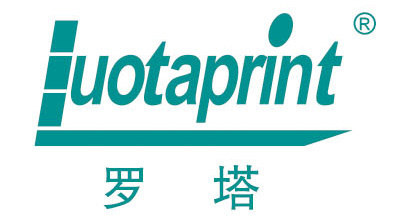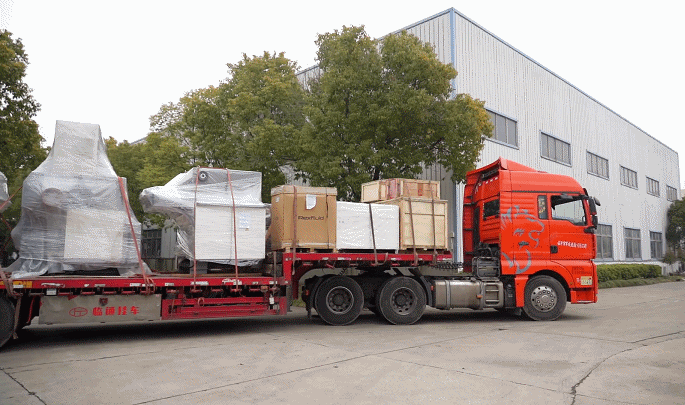Industrial Network Solutions in Carton Printing Machinery
Release time:
2018-06-21
DeviceNet is a field network with excellent construction performance. The new 2 covers a wide range of application fields. It can be easily connected to the network from terminal components, actuators, control devices, etc., so that the design, manufacture, installation, and commissioning of equipment and production lines., Maintenance and other links can reduce costs and save time, while further increasing added value for customers. 1 Carton Printing Machinery Electrical Control Principle Corrugated carton is an indispensable material in the packaging industry and plays an important role in the storage and transportation process. Corrugated carton production equipment to achieve multi-color printing of corrugated cardboard, slotting, die-cutting, semi-finished carton collection.
DeviceNet is a field network with excellent construction performance. The new 2 covers a wide range of application fields. It can be easily connected to the network from terminal components, actuators, control devices, etc., so that the design, manufacture, installation, and commissioning of equipment and production lines., Maintenance and other links can reduce costs and save time, while further increasing added value for customers.
1 Carton printing machinery electrical control principle
Corrugated box is an indispensable material in the packaging industry and plays an important role in the storage and transportation process. Corrugated carton production equipment to achieve multi-color printing of corrugated cardboard, slotting, die-cutting, semi-finished carton collection and other processes. In addition to independent parameter setting and control, the operation also needs to monitor the status of other machines. Therefore, Delta HMI's Ethernet mode, the fast data transmission function of one machine and multiple screens, and the DeviceNet bus network connection just meet this requirement. The control diagram is shown in Figure 1.
Fig.1 Schematic diagram of industrial network control
DeviceNet is a more suitable industrial network solutions, the use of Delta PLC DeviceNet field bus to achieve decentralized control network integration. Each machine of this carton printing machine has 6 or more mechanical positioning. Since Delta SV series PLC currently has only 4 AB phase high-speed counters, each machine will use 2 SV PLC. However, the minor adjustment of each part is completed by using frequency converter and rotary encoder and matching PLC's high-speed counter. Delta's SV series PLC and E series frequency converter have corresponding DeviceNet fieldbus solutions. as shown in Figure 2.
Fig. 2 Schematic Diagram of Operation
The PLC of each machine is connected through a DeviceNet bus network and exchanges the required information with each other, as well as control commands, so that one of the machines can monitor the status of each part of the device, control and adjust each part of the mechanism, or stop the remote other machine in an emergency. This, on the one hand, eliminates the need for a wide range of hard wiring, and on the other hand, reduces the cost and time of wiring and installing industrial automation equipment while achieving interchangeability between similar components of a variety of products. Through the DeviceNet bus, the output frequency of the frequency converter can be adjusted in real time according to the displacement, the linearity of acceleration and deceleration can be adjusted to realize smooth start and stop, and the displacement position can be measured with the rotary encoder to achieve the effect of accurate positioning. At the same time, monitor the working condition of the inverter (including running state, output frequency, output current, alarm content, etc.). Through the touch screen of the Ethernet network, the PLC parameters of each machine can be directly set remotely, and the working condition and alarm information of the machine can be collected. In this way, the direct interconnection of the DeviceNet not only improves the communication between devices, but also provides a very important fault diagnosis function, and realizes the network interconnection of low-cost and high-performance industrial equipment.
2 Control system composition
The control system configuration is shown in Table 1.
Table 1 Control system configuration
The control architecture diagram is shown in Figure 3.
Figure 3 Control architecture diagram
Due to layout reasons, the number of encoders cannot be fully marked. In addition, the position adjustment of each mechanism only acts when the production number is changed. Therefore, in order to save costs, the customer only installs 2 frequency converters for speed regulation and positioning on each machine, and relies on external contactors to switch the motors of each mechanism. Therefore, at most 2 position adjustment mechanisms act at the same time. The man-machine interface accesses the PLC of the master station feeding part of the DeviceNet control layer through the Ethernet network, and then accesses the PLC of each slave station through the DeviceNet network. The two PLCs of each machine [industrial electrical network-cnelc] exchange data through RS485 PLC-Link. The address (NodeAddress) allocation is shown in Tables 2 and 3.
Table 2 Address allocation 1
Since the device layer is an independent network under each PLC site, the same node address can be defined without interference, but it is convenient to program (for example, the same mechanism of color set 1 to color set 4 can use the same PLC program).
Table 3 Address allocation 2
3 DeviceNetBuilder software debugging
3.1 communication connection
After the communication parameters are set, select "Network-Online" to search for devices in the network. After the search is completed, select No. 00 master station network, and the detected network modules and devices will be displayed. Select the No. 10 master station network, the detected network modules and devices will be displayed, as shown in Figure 4.
Figure 4 Select the No. 10 master station network and the detected network modules and devices will be displayed.
3.2 module parameter settings
Double-click the DNET Scanner master module icon with the left mouse button to enter the "Scan Module Configuration" tool of the master module and set the scan list of the slave station and the corresponding device (address) mapping table of the register:
Connect to the master station PLC of set color 1, set color 2, set color 3, set color 4, slotting, die cutting and collection respectively, switch to each device layer network, and edit the address mapping table, as shown in fig. 5.
Figure 5 Editing the address map table
After the configuration, switch the PLC working mode to stop, select "network-download", download the set parameters to the DeviceNet module, and then run the PLC again after downloading. Check that the "MS LED" and "NS LED" indicators on the DVPDNET-SL of the master station are both green and display the DeviceNet communication node number. In this way, the DeviceNet setting work is basically completed.
4 Conclusion
The whole machine of the equipment is designed and manufactured according to high requirements, high speed, high efficiency, reliability and safety. The maximum feeding frequency is 200 sheets/minute, and the maximum paper feeding size is 1200 × 2400 (mm). It can change orders quickly, is easy to operate and adjust, and automatically returns to zero and resets. Digital electric adjustment of all clearances or positioning. Common orders can be stored through the man-machine interface to realize quick order changing operation. The technical highlight of the whole set of equipment lies in the application of bus network. On the one hand, it simplifies the wiring work of equipment manufacturing, reduces the wiring time and improves the accuracy of wiring. When constructing or assembling equipment on the production site, special wiring rules and detailed data or special training are no longer needed to simplify the equipment installation process. On the other hand, the monitoring and maintenance efficiency of equipment users is improved, and the production and maintenance work can be reduced through the bus network, after the parameter setting is completed, the formula saved to HMI can reduce the adjustment and setting of repeated production of the same process, so as to standardize the production work and facilitate equipment management. And can realize the rapid network fault information diagnosis, reduce system downtime. All in all, the industrial network is a good application tool.
Introduction to the author:
Lin Xinghua, born in February 1974, graduated from Guangdong University of Technology with a major in mechatronics. He has more than ten years of technical and service experience in the field of automation. He is currently working in the South China Region of Zhongda Dentsu and is responsible for the technical support of Delta PLC, HMI, AMD, AIC, ASD and other mechanical and electrical products.

Latest News








 E-mail: info@luota.com
E-mail: info@luota.com
 Address: Group 4, He Yang Village, Rucheng Street, Rugao City
Address: Group 4, He Yang Village, Rucheng Street, Rugao City
